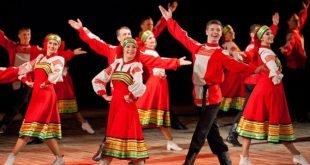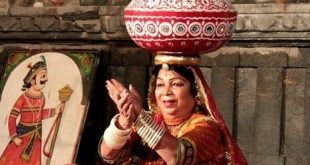Dance Movements and Techniques in Veeragase Folk Dance encompass a dynamic and expressive blend of rhythmic footwork, graceful hand gestures (mudras), and dramatic body postures, creating a mesmerizing art form that narrates tales of valor and heroism. The dance movements showcase powerful and agile footwork, known as “kandige,” which synchronize with the accompanying music, while the mudras and facial expressions effectively convey the emotions and narratives depicted in the dance. The choreography features seamless transitions, symmetrical formations, and precise coordination among performers, creating a captivating visual and auditory experience that preserves Karnataka’s rich cultural heritage.
Dance Movements and Techniques in Veeragase Folk Dance:
Veeragase Folk Dance is renowned for its dynamic and energetic movements, as well as its expressive techniques that effectively convey the stories of valor and heroism. The dance form features a captivating blend of intricate footwork, graceful hand gestures, and dramatic body postures, all of which contribute to the unique and captivating nature of the performance.
One of the defining characteristics of Veeragase Dance is its emphasis on powerful and rhythmic footwork. The performers skillfully execute a series of intricate steps, known as “kandige,” which involve stomping, jumping, and swift movements, creating a resounding rhythm that synchronizes with the accompanying music. The rhythmic footwork not only adds vigor to the performance but also showcases the dancers’ expertise in maintaining precise timing and coordination.
The hand gestures, or “mudras,” play a crucial role in expressing the emotions and narratives portrayed in Veeragase Dance. The dancers use a wide array of mudras, each with its own symbolic meaning, to depict various characters, elements of nature, and mythological events. The mudras, when combined with the expressive facial expressions and postures, enable the dancers to narrate the stories effectively, creating a powerful visual impact on the audience.
In addition to the footwork and hand gestures, Veeragase dancers also display remarkable control over their body movements. The dance form incorporates swift turns, spins, and leaps, known as “karis,” which add grace and dynamism to the performance. The seamless transitions between different movements and postures further showcase the dancers’ versatility and skill.
The choreography of Veeragase Dance often follows a structured format, with well-defined patterns and formations. The dancers move in symmetrical and circular arrangements, creating visually appealing patterns that enhance the overall aesthetics of the performance. The synchronization and coordination among the performers are crucial elements that contribute to the cohesive and impactful presentation of the dance.
Moreover, Veeragase Folk Dance demands physical stamina and endurance from the performers due to its high-energy nature. The dancers undergo rigorous training to build their strength and flexibility, enabling them to execute the demanding movements with precision and grace.
In conclusion, the dance movements and techniques in Veeragase Folk Dance are a captivating blend of powerful footwork, expressive hand gestures, and graceful body movements. The combination of rhythmic elements, expressive storytelling, and dynamic choreography makes Veeragase a mesmerizing art form that continues to enchant audiences and preserve the rich cultural heritage of Karnataka.
Expressive Gestures in Veeragase Folk Dance:
Veeragase Folk Dance, hailing from Karnataka, India, is a mesmerizing art form renowned for its expressive gestures, which serve as a powerful means of storytelling and emotional communication. The dancers’ movements and hand gestures, also known as “mudras,” play a central role in conveying the narratives of valor, bravery, and mythological tales depicted in the dance.
The expressive gestures in Veeragase Dance are meticulously choreographed and executed with precision, reflecting the artistry and skill of the performers. Each mudra holds symbolic significance, representing various characters, deities, and elements of nature in the mythological stories portrayed. The dancers use their hands, fingers, and arms to create a visual language that conveys emotions, actions, and narratives, captivating the audience and immersing them in the world of ancient legends.
For instance, mudras representing different weapons, such as swords, bows, and arrows, vividly depict the battles fought by mythical heroes, infusing the dance with a sense of energy and dynamism. Similarly, mudras depicting animals, such as lions or elephants, bring to life the majestic and powerful attributes of these creatures, adding depth and richness to the performance.
Apart from portraying external elements, the mudras in Veeragase Dance also convey intricate emotions and inner feelings of the characters. The dancers use facial expressions, eye movements, and body postures to depict a wide range of sentiments, such as valor, determination, devotion, and love. This emotional depth and portrayal of human emotions resonate with the audience, allowing them to connect with the characters and the stories being narrated.
The expressive gestures in Veeragase Dance are not only a means of storytelling but also an essential aspect of spiritual expression and devotion. As the performers embody the characters they portray, the mudras become a medium through which they invoke the divine essence, intensifying the spiritual aspect of the dance.
Overall, the expressive gestures in Veeragase Folk Dance epitomize the art form’s ability to communicate profound emotions, narratives, and cultural heritage through the graceful movements of the dancers. It is through these hand gestures and physical expressions that Veeragase Dance continues to captivate audiences, preserving the artistic legacy and ancient storytelling traditions of Karnataka’s cultural heritage.
Choreography and Formations in Veeragase Folk Dance:
Veeragase Folk Dance, an enchanting art form originating from Karnataka, India, showcases a captivating blend of choreography and formations that add a visual spectacle to the performance. The choreography of Veeragase Dance is intricately designed to depict the valorous exploits of mythological heroes and celestial beings, reflecting the essence of the dance’s central theme.
The choreography in Veeragase Dance is characterized by its dynamic and energetic nature, emphasizing powerful footwork, graceful hand gestures, and dramatic body movements. The dancers perform a series of intricate steps known as “kandige,” which involve agile movements, leaps, and turns, creating a sense of vibrancy and rhythm. The choreography’s fast-paced and rhythmic nature complements the expressive gestures and storytelling elements of the dance, capturing the attention of the audience.
Additionally, Veeragase Dance often involves structured formations and patterns that add visual appeal and aesthetic beauty to the performance. The dancers move in symmetrical and circular arrangements, forming geometric shapes and designs that enhance the overall aesthetics of the dance. These formations are meticulously choreographed to create a sense of harmony and coordination among the performers, exemplifying the artistry and precision of the dance.
The choreography of Veeragase Dance is not limited to solo performances; it also involves group choreography, where multiple dancers come together to create mesmerizing synchrony and coordination. The group formations add an element of grandeur and magnificence to the performance, captivating the audience with the collective beauty of the dancers’ movements.
Moreover, the choreography in Veeragase Dance is often tailored to suit the specific narrative being portrayed. Each dance sequence is carefully crafted to depict various episodes from mythology or historical events, allowing the performers to effectively convey the heroic deeds and valorous acts of the characters they represent.
The artistic brilliance of Veeragase Dance’s choreography lies in its ability to strike a balance between the dynamic energy and expressive storytelling, creating a holistic and captivating artistic experience. The formations and choreography not only preserve the traditional roots of Karnataka’s cultural heritage but also showcase the ingenuity and creativity of the dancers, making Veeragase Folk Dance a celebrated art form that continues to enthrall audiences with its harmonious blend of movement and narrative.
Traditional Footwork in Veeragase Folk Dance:
Veeragase Folk Dance, an entrancing dance form originating from Karnataka, India, is characterized by its lively and intricate traditional footwork, which forms the backbone of the dance’s dynamic movements. The traditional footwork in Veeragase Dance is a captivating display of rhythm, precision, and vigor, adding a rhythmic cadence to the performance and captivating the audience with its energy.
The footwork in Veeragase Dance is known as “kandige,” and it involves a series of swift and agile steps, jumps, and stomps. The dancers execute these footwork patterns in synchrony with the accompanying music and percussion instruments, creating a resounding rhythm that adds vitality and vibrancy to the performance.
The traditional footwork in Veeragase Dance serves multiple purposes. Firstly, it complements the expressive hand gestures (mudras) and facial expressions of the dancers, allowing them to effectively convey the characters’ emotions and the narratives they portray. The rhythmic footwork becomes an essential element in storytelling, adding emphasis to the heroic deeds and valorous acts depicted in the dance.
Secondly, the traditional footwork in Veeragase Dance showcases the dancers’ physical prowess, stamina, and agility. The performers undergo rigorous training to master the intricate footwork patterns and maintain precise timing, enabling them to execute the movements with grace and finesse.
Moreover, the footwork in Veeragase Dance plays a crucial role in engaging the audience and creating a vibrant ambiance during the performance. The rhythmic beats produced by the footwork resonate with the spectators, immersing them in the energetic atmosphere of the dance and creating a sense of connection between the performers and the audience.
The traditional footwork in Veeragase Folk Dance is an embodiment of the dance form’s cultural heritage and traditional roots. It reflects the celebratory spirit of Karnataka’s cultural traditions and serves as a testimony to the artistry and dedication of the dancers. The rhythmic and vibrant footwork, combined with the expressive storytelling, makes Veeragase Folk Dance an unforgettable and immersive experience, preserving the artistic legacy and cultural significance of this ancient dance form.
Gallery
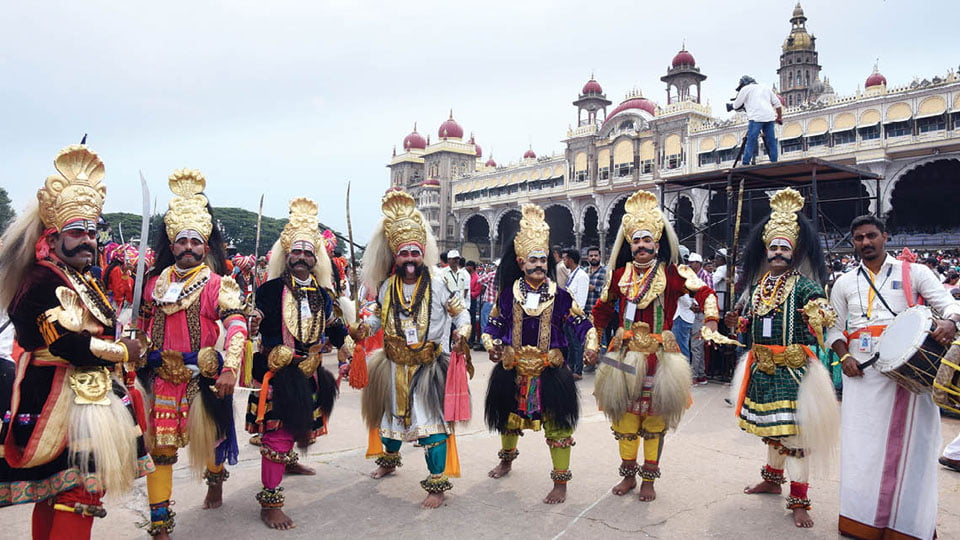
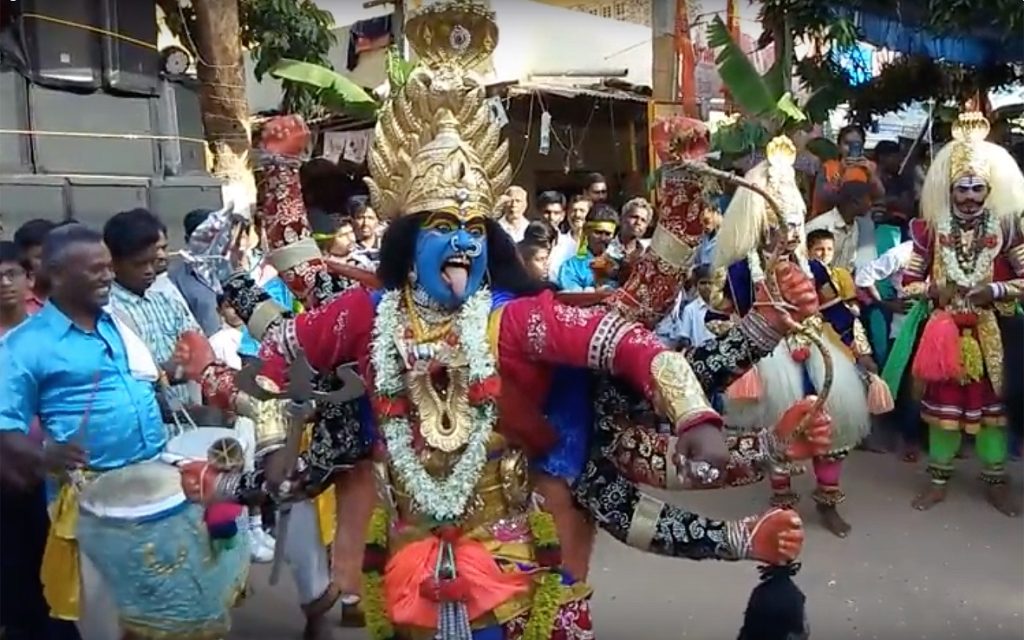
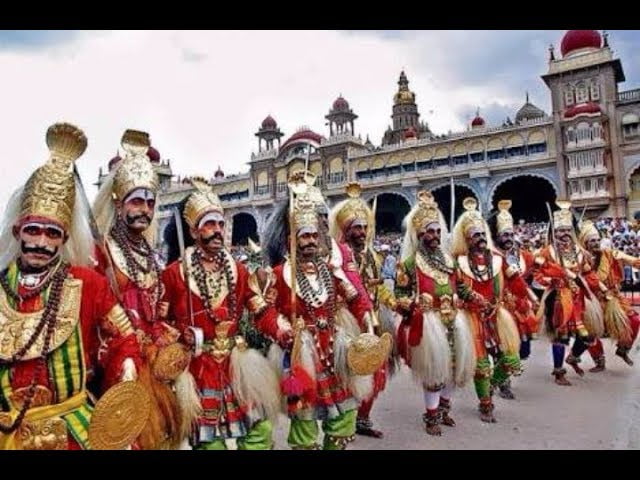
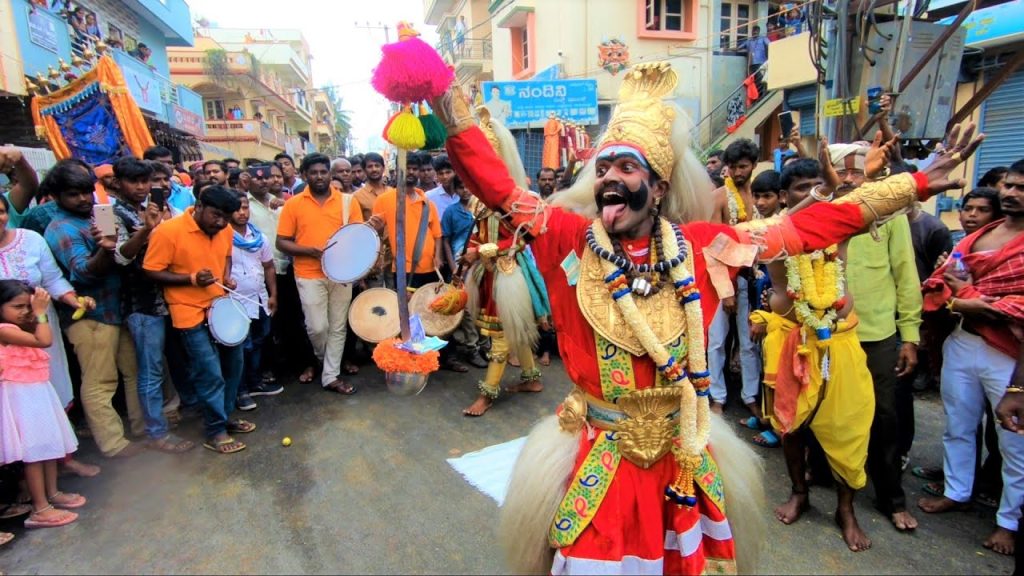


Video
Frequently asked questions and their answers about Dance Movements and Techniques in Veeragase Folk Dance:
1. What are the key elements of Dance Movements in Veeragase Folk Dance?
The key elements of dance movements in Veeragase Folk Dance include dynamic footwork, expressive hand gestures (mudras), dramatic body postures, swift turns, and rhythmic jumps, all of which contribute to the energetic and captivating nature of the dance
2. How do dancers execute the Footwork in Veeragase Dance?
Dancers execute the footwork, known as “kandige,” by performing a series of intricate steps, stomps, and jumps in sync with the music and rhythm. The footwork showcases the dancers’ agility, precision, and stamina, adding vibrancy and rhythm to the performance.
3. What is the significance of Hand Gestures (Mudras) in Veeragase Dance?
Hand gestures, or mudras, play a crucial role in Veeragase Dance as they convey emotions, characters, and narratives. Each mudra holds symbolic meaning, representing various elements of mythology and enabling the dancers to effectively tell stories through their movements.
4. How do dancers depict the themes of valor and heroism through Techniques in Veeragase Dance?
Through techniques such as powerful footwork and bold postures, the dancers depict the themes of valor and heroism. They embody mythological characters and showcase their bravery and courage, effectively communicating the heroic narratives to the audience.
5. What makes Veeragase Folk Dance unique in terms of its Dance Movements and Techniques?
Veeragase Folk Dance stands out for its dynamic and energetic dance movements, combined with expressive storytelling techniques. The seamless integration of footwork, hand gestures, and body postures in harmony with the music creates a captivating and unique art form that preserves Karnataka’s cultural heritage.
 FolkDanceWorld.Com International Folk Dances
FolkDanceWorld.Com International Folk Dances



